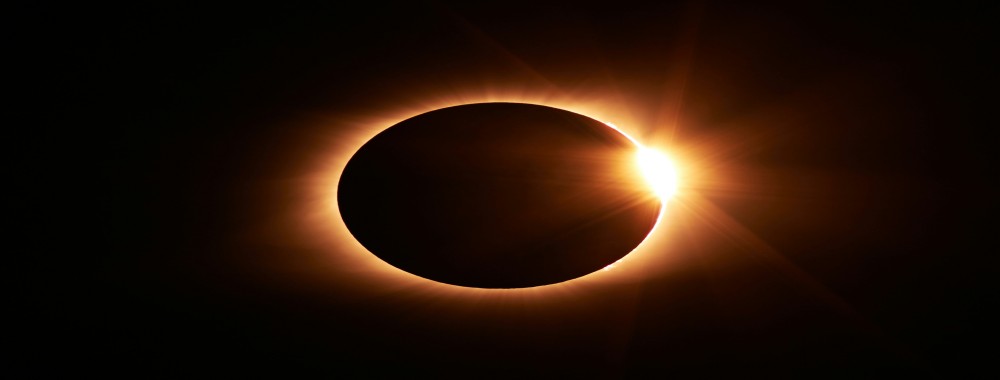On August 12, 2026, Iceland will witness its first total solar eclipse since 1954, with the path of totality crossing the Westfjords, Snæfellsnes Peninsula, and Reykjanes Peninsula. In Reykjavík, totality will begin at 17:48, lasting approximately one minute, marking the first such event visible from the capital since 1433 .
For those seeking a longer experience, the Westfjords offer the most extended duration of totality, with locations like Látrabjarg providing up to 2 minutes and 13 seconds of darkness . The Snæfellsnes Peninsula, known as "Miniature Iceland" for its diverse landscapes, also lies within the path of totality and offers excellent viewing opportunities.
A total solar eclipse is a truly awe-inspiring phenomenon. As the Moon completely blocks the Sun, the sky turns dark in the middle of the day, temperatures fall, and the Sun's corona—its glowing outer atmosphere—appears like a shimmering halo. Stars and planets emerge in the dim sky, creating a surreal and unforgettable moment. This is a stark contrast to a partial eclipse, where the Sun remains partially visible and the dramatic transformation of the sky never fully takes place.
These events are exceptionally rare at any given location. Although a total eclipse happens somewhere on Earth roughly every 18 months, the path of totality is narrow—usually just 100 to 200 kilometers wide—meaning any single spot on Earth might only see one every 360 to 410 years.
The Path of the 2026 Eclipse
The total solar eclipse of 2026 will begin in Northeast Greenland and sweep across western Iceland, including the stunning regions of the Westfjords, the Snæfellsnes Peninsula, and the Reykjanes Peninsula, before continuing on to Portugal and Spain. Although a partial eclipse will be visible across wide areas of Europe, North America, and Africa, only those within the narrow band of totality will witness the full dramatic display—complete with a darkened sky and the Sun’s glowing corona.
Why Visit Iceland For The Eclipse?
Iceland lies closest to the point of maximum eclipse, located just off the coast near Breiðafjörður Bay, between the Westfjords and the Snæfellsnes Peninsula. This prime location offers the longest duration of totality—up to 2 minutes and 18 seconds—providing viewers with the most extended opportunity to experience the full awe of the eclipse in all its glory.
Best Places To See The Eclispe In Iceland.
Reykjavík Capital Area
Totality will begin in the Reykjavík area at 17:48:12, lasting for approximately one minute. As Iceland’s capital, Reykjavík offers a captivating mix of culture, history, and natural wonders. With its iconic colorful buildings, dynamic arts and music scene, and deep Viking roots, the city is both charming and full of character. Visitors can unwind in geothermal pools, savor excellent cuisine, and use the city as a gateway to explore nearby glaciers and volcanoes. Experiencing the eclipse here is the perfect highlight to an unforgettable Icelandic adventure.
Reykjanes Peninsula
Located just a short drive from both Keflavík International Airport and Reykjavík, the Reykjanes Peninsula is one of the most accessible spots for witnessing the 2026 eclipse. Known for its striking volcanic terrain, steaming geothermal areas, and the world-renowned Blue Lagoon, the peninsula combines convenience with dramatic natural beauty. Its proximity to major transport links and tourist amenities makes it an ideal and location to experience the eclipse in a truly unforgettable setting.
Westfjords
Renowned for their rugged beauty and sense of seclusion, the Westfjords are one of Iceland’s most breathtaking and untouched regions. With towering cliffs, winding fjords, and minimal light pollution, this remote area offers ideal conditions for viewing the eclipse in clarity and solitude. Frequently praised by travel guides as a must-visit destination, the Westfjords combine raw natural splendor with peaceful isolation—creating a truly unforgettable setting for this rare celestial event.
Snæfellsnes Peninsula
Often referred to as "Iceland in Miniature," the Snæfellsnes Peninsula showcases a stunning variety of landscapes all in one place. From the majestic Snæfellsjökull Glacier to the iconic Mt. Kirkjufell, one of the most photographed landmarks in Iceland, the region offers a breathtaking mix of mountains, lava fields, black sand beaches, and charming fishing villages. With its rich natural beauty and cultural depth, Snæfellsnes provides a truly captivating backdrop for experiencing the 2026 eclipse.
What Will Happen In The Rest of Iceland
While only parts of western Iceland will experience totality, the entire country will witness at least a partial solar eclipse. Across most regions, the Sun will appear as a slender crescen.
In East Iceland, the town of Neskaupstaður will see about 95% of the Sun obscured, while Höfn in the south will experience 96% coverage. Up north, Akureyri will witness an impressive 97.91% partial eclipse.
Only two populated areas fall on the edge of the path of totality: Hvanneyri in West Iceland, where totality could last just 1 to 5 seconds depending on exact location, and Mosfellsdalur near Reykjavík. In Hvanneyri, moving just a few meters can mean the difference between witnessing totality or a 99.99% partial eclipse.
Given the rarity of this celestial event, it's advisable to plan and book accommodations and tours well in advance, as demand is expected to be high!







